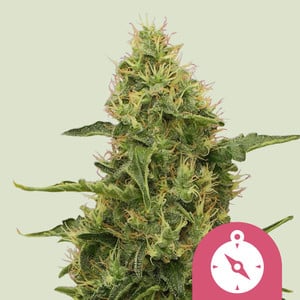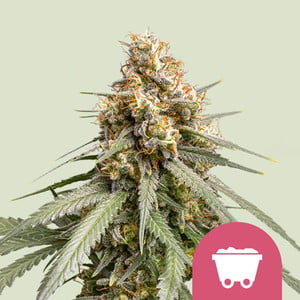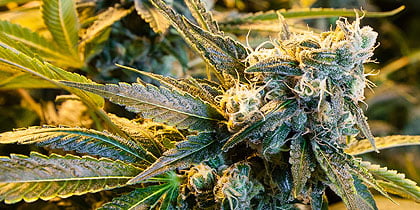Growing Cannabis: Indica, Sativa, And Hybrids
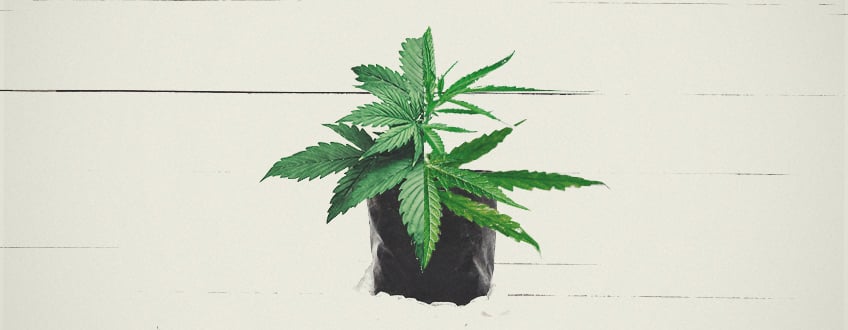
Become acquainted with growing indica, sativa, and hybrid cannabis.
Contents:
- 3. Cannabis sativa
- 3.a. Growing information
- 3.b. Cultivation tips
- 3.c. Typical traits of Cannabis sativa
- 4. Hybrids
- 4.a. Typical traits of hybrid cannabis
- 1. Understanding the cannabis subspecies
- 2. Cannabis indica
- 2.a. Growing information
- 2.b. Cultivation tips
- 2.c. Typical traits of Cannabis indica
- 3. Cannabis sativa
- 3.a. Growing information
- 3.b. Cultivation tips
- 3.c. Typical traits of Cannabis sativa
- 4. Hybrids
- 4.a. Typical traits of hybrid cannabis
The cannabis plant is versatile, hardy, and—unlike many kinds of plants—can survive in almost every climate in the world. However, thanks to evolution (and later on, selective breeding), the species has adapted to the landscapes in which it’s cultivated, and thus, vast variation between different cannabis plants is the norm today.
UNDERSTANDING THE CANNABIS SUBSPECIES
There are thousands of unique cannabis strains, and each has different characteristics that impact growth, production potential, flavour and aroma, and physiological effects on people. Yet, all of these strains can be grouped into one of three cannabis subspecies: Cannabis sativa, Cannabis indica, and Cannabis ruderalis.
The vast majority of photoperiod strains (strains that initiate bloom based on a change in light cycle) contain varying amounts of both indica and sativa genetics. Ruderalis, on the other hand, is a type of autoflowering cannabis that flowers based on age, and is often considered to be inferior to photoperiod cannabis morphologically. Although there is more to say in this regard, for the remainder of this article, we will be focusing mainly on the distinct characteristics of indica and sativa so the average grower can get a better idea of what to expect.
CANNABIS INDICA
Cannabis indica is indigenous to today’s regions of India, Pakistan, Turkey, and Afghanistan. Originating in the harsh and varied environments of the Hindu Kush mountains, these stocky bushes develop wide, dark green leaves to soak up all available sunlight, flower quickly, and produce a plethora of dense buds.
GROWING INFORMATION
Thanks to the short growing cycle offered by indicas, not to mention their short stature, they can be quite convenient for home growers without too much time, space, or resources on their hands. Just think about it; a compact bush that finishes fast is easier to maintain (especially indoors) than a spindly, albeit majestic, tree. Even outdoors, indicas are resilient and laugh in the face of fluctuating temperatures—just remember where they came from. Moreover, the fast flowering time of indicas means outdoor growers can harvest before the first frost.
CULTIVATION TIPS
Although indica plants normally develop into a Christmas tree-like shape, this growth can be tamed and manipulated to even out the canopy and direct more light to all available budding sites. Techniques like topping and basic LST (low-stress training) can be used to give your plant the ideal shape for robust health and huge yields. Once you’re happy with how it looks, you can switch your vegging plant to the flowering phase by reducing light hours inside to 12 hours on, 12 hours off.
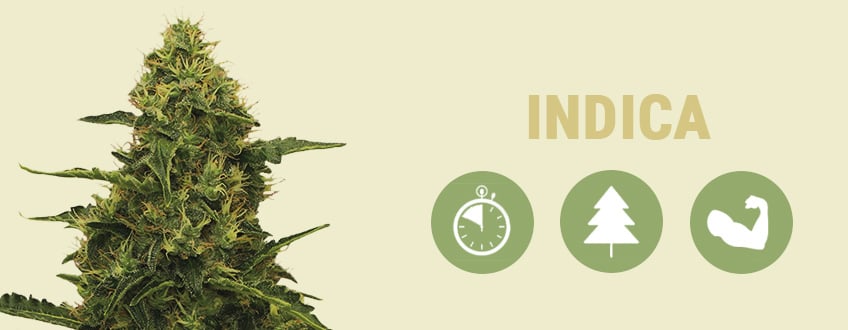
One of the major “drawbacks” you must watch out for with indicas is also one of their greatest strengths: dense buds. Indeed, as buds grow in size and put on weight, they become at much greater risk of developing mould, especially in humid regions with temperatures that foster pests and pathogens. Avoid this issue by carefully controlling environmental conditions inside, or by erecting necessary shelter outside (in case of rain, excess humidity, etc.). Having a small greenhouse or shed where you can hide your plants from inclement weather can be a great safety net.
TYPICAL TRAITS OF CANNABIS INDICA
• Short, bushy stature
• Broad, dark green leaves
• Dense buds
• Short flowering time
• Resilient to temperature fluctuations
• Susceptible to mould and pests
Indica seem like your type of strain? Great! Check out our top 10 indica strains to get your grow-op on its way!
Northern Light
|
|
Northern Light S1 |
|
|
500 - 550 gr/m2 |
|
|
100 - 160 cm |
|
|
8 - 9 weeks |
|
|
THC: 18% |
|
|
Sativa 0% Indica 100% |
|
|
575 - 625 gr/plant |
|
|
180 - 220 cm |
|
|
Late September |
|
|
Balanced, Clear, Stoned |
CANNABIS SATIVA
Cannabis sativa is found mainly in the hot, dry climates of Africa, Asia, and Central America. These strains grow into tall, slender specimens with long, thin leaves. As they can exceed 3m in height, Cannabis sativa typically takes much longer to mature than indica.
GROWING INFORMATION
Sativas require a lot of light and higher temperatures to thrive—just think about their natural habitat located relatively close to the equator. These plants also require a large amount of space, have much airier buds, and remain in the flowering phase for several weeks longer than most indicas. In their favour, these plants usually require less fertiliser and fewer feedings than indica plants. Moreover, thanks to their airier bud structure, flowers are less susceptible to mould and excess moisture.
CULTIVATION TIPS
Sativa plants can be delicate, and have less chlorophyll than indicas due to their thin leaves. This also means that you need to give your sativa plants sufficient light, heat, and humidity. Whereas you might be afraid to raise your indicas in the tropics, your sativas will be right at home in the warm, sticky weather.
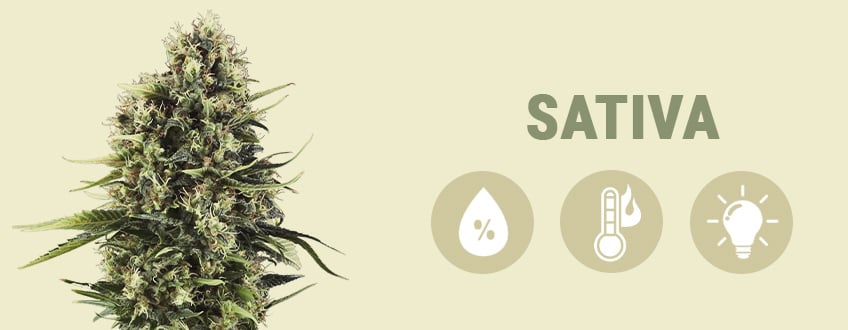
For those with a bit of growing experience, you can tame the height of your sativa specimens using the screen of green (ScrOG) technique. By situating a screen above your plant and weaving new growth through the mesh, you’ll create a flat canopy of buds that optimises available space and yield potential. Like indicas, regular (photoperiod) sativa varieties require a change in light cycle to start blooming. Keep in mind that plants can continue to surge in height for the first couple weeks of the flowering phase, so make sure you have the space to accommodate this growth spurt.
TYPICAL TRAITS OF CANNABIS SATIVA
• Tall, lanky stature
• Thin, light green leaves
• Airy buds
• Longer flowering time
• Requires higher temperature and humidity
• Less susceptible to mould
For those with a sativa kink, check out our top 10 sativa specimens to suit your fancy!
Shining Silver Haze
|
|
Haze x (Skunk x Northern Light) |
|
|
600 - 650 gr/m2 |
|
|
80 - 120 cm |
|
|
9 - 11 weeks |
|
|
THC: 21% |
|
|
Sativa 75% Indica 25% |
|
|
600 - 650 gr/plant |
|
|
180 - 220 cm |
|
|
Late October |
|
|
Heavy |
Ready to start growing? Download our beginners guide and unlock expert tips on Indicas, Sativas and more!
Free RQS
Grow Guide!
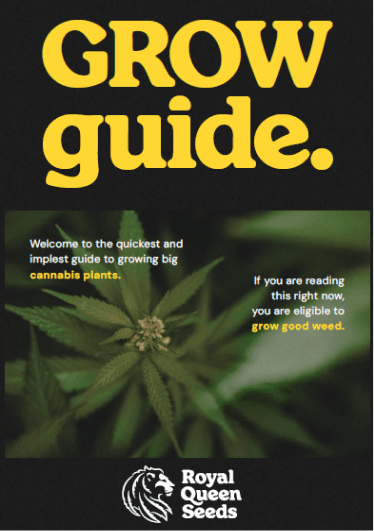
HYBRIDS
While you can find 100% indica or sativa strains, most cultivars on the market today contain varying levels of both genetics. As a result, these “hybrid” strains can be indica-dominant, sativa-dominant, or split 50/50. This versatility allows breeders to create novel strains that harness the best features of both sativa and indica while eliminating the less advantageous features. For instance, a well-developed hybrid will feature the dense bud structure and short flowering phase of an indica, combined with the best traits of a given sativa to offer the best of both worlds.
Remember the ruderalis subspecies we referred to earlier? Hybrids can contain these genetics as well, although, as mentioned above, ruderalis is chiefly added to reduce flowering time since its other qualities are seen as inferior. Some photoperiod cannabis strains can contain a small amount of ruderalis, but these genetics mostly reside in autoflowering strains.
Typically, hybrids will inherit the easy growth of indica plants while keeping the highly sought-after effects offered by sativas. As such, hybrids have become the go-to for home growers and commercial cultivators alike.
TYPICAL TRAITS OF HYBRID CANNABIS
• Takes morphology from both indica and sativa
• Generally brief flowering time
• Great yields
• Robust and resilient growth
Think a hybrid is the right strain type for you? Check out our top 5 Skunk hybrids for some seriously smelly and robust cannabis. You simply can’t go wrong with Skunk. For a high that blasts you into outer space, and a flavour profile that harnesses the best of both strains, you can’t pass up our top 5 OG Kush hybrids.
Categories
Growing Feminised


























